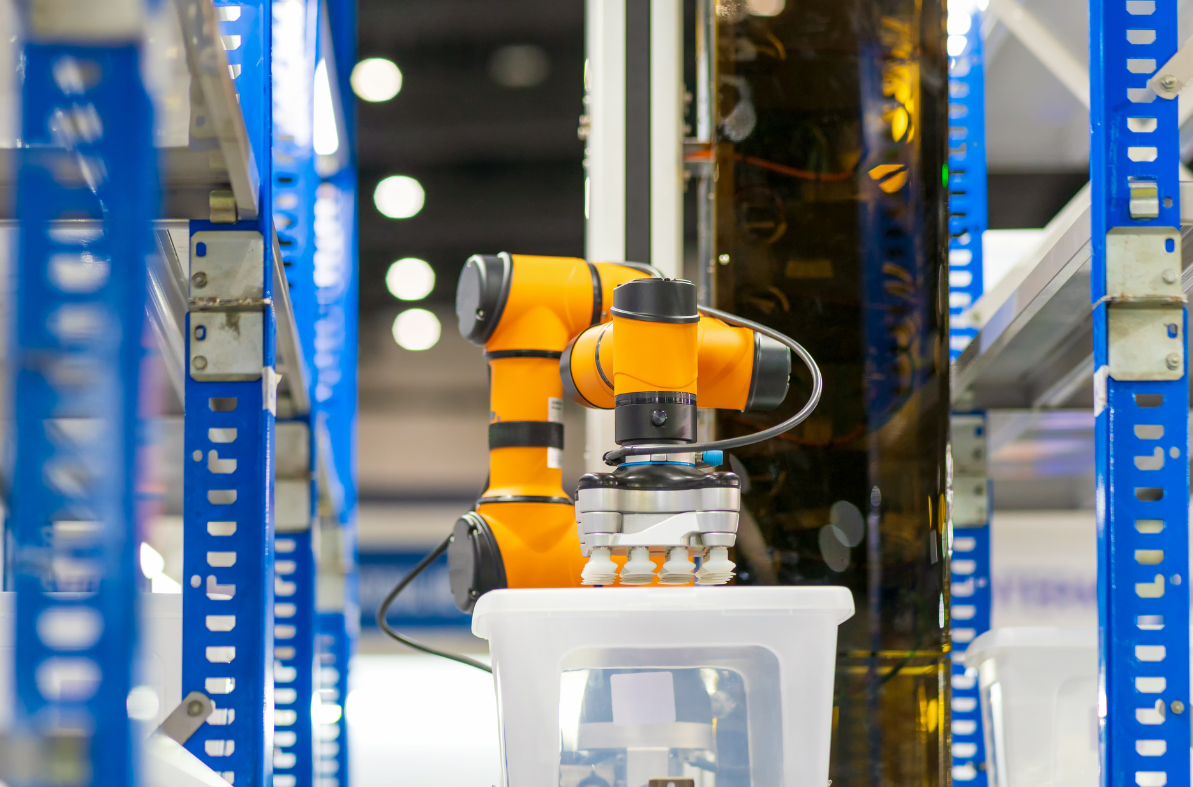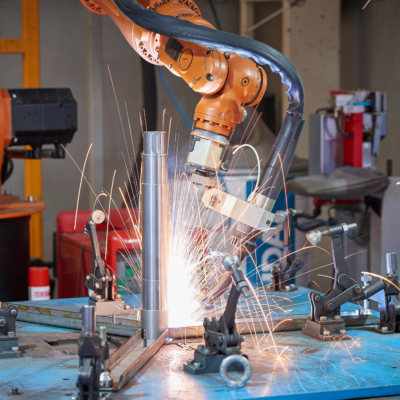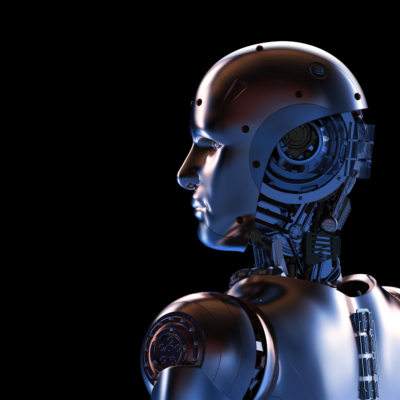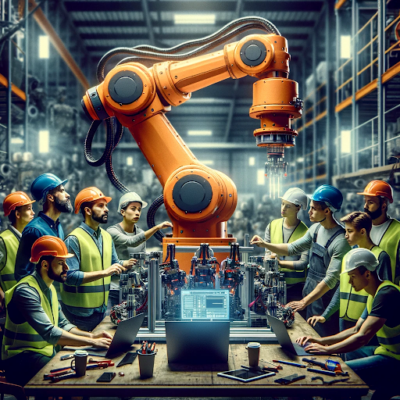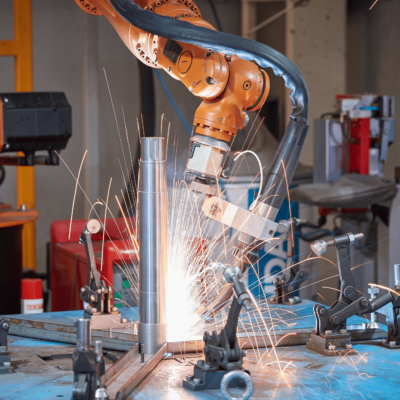In the world of robotics, an important part is the end effector. Think of it as the robot’s hand. This special tool on the robot’s arm lets it hold, move, or change things. For example, robots can pick up a box or paint a car with an end effector. These tools are very important because they help robots do many jobs in places like factories or hospitals.
End effectors come in different types. First, there are grippers, like fingers for the robot, to grab and hold items. They can have two, three, four, or more fingers. Some use suction or magnets to hold things. Second, we have process tools. These are for jobs like welding, shaping metal, painting, or 3D printing. Each tool is special for its job. Third, there are sensors. These let the robot ‘see’ or ‘feel’. They use things like sound waves, lasers, and cameras to understand what’s around them. All these types help robots do their tasks well.
What is an End Effector?
An end effector is a special tool connected to the end of a robot arm. It is like the hand of the robot. This tool lets the robot hold, move, or change objects. For example, it can help robots pick up a box or paint a car. End effectors are key parts of robots, allowing them to do different jobs. They are very important in robotics because they help robots to work in many areas, like factories or hospitals.
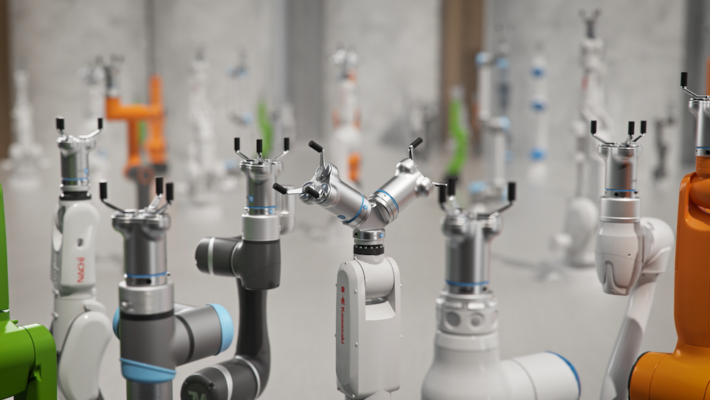
The 3 Basic Types of End Effector:
Robots use different kinds of end effectors for various tasks. Let’s look at the three basic types:
- Grippers: These are like fingers for a robot. They help the robot to grab and hold things. There are many kinds of grippers. Some have two, three, four, or even five fingers. Others use vacuum to suck up objects, magnets to hold metal, or needles to pick up soft things.
- Process Tools: These tools are used for specific jobs like welding (joining metal), machining (shaping metal), painting, or making things with 3D printers. They are like special tools for each job.
- Sensors: Sensors are the robot’s way of ‘seeing’ or ‘feeling’. They include things like ultrasonic sensors (using sound waves), laser scanners, cameras (2D and 3D), and infrared sensors (using heat). These help the robot to understand its surroundings and work better.
Each type of end effector has its own use. They make robots more useful in different tasks.
Extra: Tool Changers
Tool changers are another important part of a robot. They allow a robot to switch between different tools or end effectors by itself. It’s like a person changing tools in their hand without needing help. This makes robots much more flexible. They can do different jobs without stopping to change tools. Tool changers are very helpful in factories where robots need to do many different things quickly and accurately.
Which End Effector is Right for You?
Choosing the right end effector depends on the job you need the robot to do. Here are some points to think about:
- Task: What job do you want the robot to do? Different tasks need different end effectors.
- Cost: Some end effectors are more expensive than others. Think about how much you can spend.
- Complexity: Some end effectors are more complex to use and set up. Choose one that matches your skills and needs.
Also, there are two kinds of technologies in end effectors:
- Active Compliant Technology: This is very accurate and flexible. It’s good for tasks that need a lot of precision.
- Passive Technology: This is simpler and might be better for tasks that don’t need as much accuracy.
Picking the Right End Effector:
To pick the right end effector, follow these steps:
- Identify the Task: Understand what you want the robot to do.
- List Suitable End Effectors: Find out which end effectors can do this job.
- Consider Cost and Complexity: Think about how much they cost and how hard they are to use.
- Make a Decision: Choose the one that fits your needs best.
Different end effectors can do the same job in different ways. Your choice should match the specific needs of your task.
How to Use an End Effector With Your Robot:
Using an end effector with your robot involves these steps:
- Mounting: Attach the end effector to the robot’s arm.
- Connecting Power: Make sure it gets the power it needs.
- Setting Up Communication: Let the robot and end effector ‘talk’ to each other.
- Programming: Use software, like RoboDK, to tell the robot how to use the end effector.
These steps help your robot work well with the end effector.
Applications & Future of End Effectors:
End effectors are special tools used by robots in many fields. They help robots do different jobs. Let’s look at how they are used and what the future holds for them.
How End Effectors are Used Now:
- In Factories: Robots use end effectors to build things. They can weld, put parts together, or paint.
- In Hospitals: Here, robots help in surgeries. They can do very detailed work that helps doctors.
- On Farms: Robots with end effectors help plant seeds and pick fruits. They make farming easier.
- In Warehouses: They sort and pack things. This helps send out packages faster.
What Will Happen in the Future:
- Better Sensing: Robots will ‘feel’ things better. This means they can handle delicate items safely.
- Working with AI: AI will make robots smarter. They will learn and make decisions. This helps them do their jobs better.
- More Flexible: End effectors will move like human hands. They will be able to do more types of work.
- Safe with People: Robots will work more safely with humans. They will understand and respond better to people around them.
- New Jobs: Robots will start working in new areas. They might help in studying the environment or even in entertainment.
Conclusion:
End effectors are like the hands of robots, letting them do many different tasks. There are various types, each with its own use. Choosing and using the right end effector is important to make sure your robot does its job well. With advancements in technology, end effectors will continue to play a key role in robotics, making robots more useful in many different fields.
To learn more about End Effectors.
Are you looking for a System Integrator?
Visit Qviro
